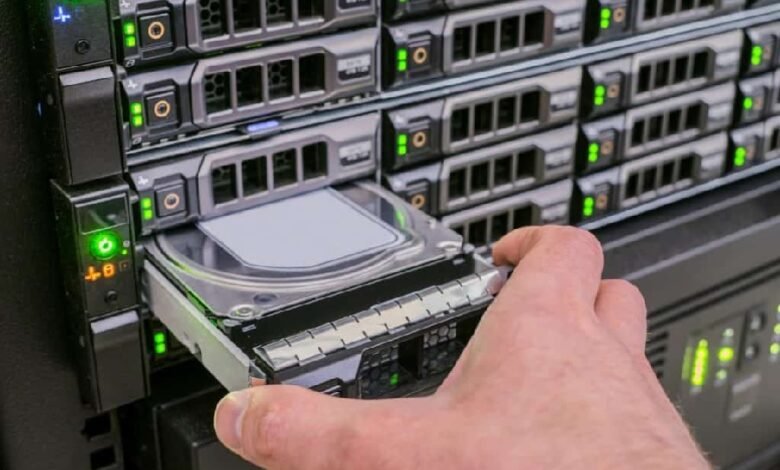
In this dynamic world of technology, it is crucial for businesses that seek to remain competitive and productive to ensure they get the right IT equipment. Various options range from computers and servers to networking devices. The details of buy IT equipment, ranging from types and brands to maintenance and safety aspects, will be addressed in this article. IT equipment is a broad range of devices that are used for information technology purposes. These include computers, servers, network devices, and peripherals. Modern businesses can only function effectively with efficient IT equipment, which promotes data storage and information sharing.
Types of IT Equipment
A. Computers and Laptops
Computers and laptops are fundamental tools for any business. Choosing the right specifications is crucial for optimal performance.
B. Servers and Data Storage
Servers play a vital role in managing and storing data securely. Understanding the server’s capacity and scalability is key.
C. Networking Devices
Routers, switches, and other networking devices are essential for seamless communication within an organization.
D. Peripherals and Accessories
Accessories like printers, scanners, and external storage contribute to a well-rounded IT setup.
Factors to Consider Before Buying IT Equipment
Setting a budget according to the business reality makes businesses focus on affordable and economical options. Understanding the technical specifications guarantees that selected information technology equipment meets business requirements. Compatibility between devices creates a coherent IT infrastructure. It would be an advantage to find IT equipment with warranties and support that limit downtime, problems, etc..
Where to Buy IT Equipment
Online shopping is convenient and makes a great variety of products available. The process of researching customer reviews is aimed at informed decisions. Buying from an authorized dealer provides guarantees of product authenticity and warranties. Secondhand markets allow savings on the prices while, at the same time, a detailed inspection is required to avoid any possible problems. Some businesses require specialized configurations. Custom-built solutions may be the only option.
Tips for Negotiating Prices
Understanding the market prices for desired equipment empowers businesses during negotiations. Bulk purchases often lead to discounts, making it a cost-effective strategy for businesses. Many retailers offer financing plans, making high-quality IT equipment accessible without a significant upfront cost. Refurbished equipment can provide significant cost savings without compromising on performance.
The Impact of IT Equipment on Business Productivity
Efficient IT equipment streamlines business operations, reducing manual efforts and increasing productivity. Networking devices enable seamless communication, fostering collaboration among team members. In remote work, IT equipment ensures employees can work effectively from anywhere.
Trends in IT Equipment
Increasingly, businesses prioritize environmentally friendly IT equipment with energy-efficient features. AI integration enhances the capabilities of IT equipment, contributing to smarter and more efficient operations. Edge computing brings processing closer to the data source, reducing latency and improving performance. The advent of 5G technology revolutionizes data transfer speeds, impacting the efficiency of IT equipment.
Maintenance and Upkeep of IT Equipment
Regular maintenance extends the lifespan of IT equipment and prevents unexpected breakdowns. Knowing when to upgrade or replace equipment is crucial for maintaining optimal performance.
Security Concerns with IT Equipment
Understanding the evolving landscape of cybersecurity threats and how to protect IT assets. Equipment Implementing best practices to safeguard IT equipment from potential breaches and data loss.
Future of IT Equipment
Exploring the imminent impact of emerging technologies on the future of IT equipment, we delve into potential advancements shaping business strategies. Anticipating transformative developments in IT gear, we analyze their potential influence on the evolving landscape of technology and its profound implications for strategic business decisions.
Conclusion
When procuring IT equipment, businesses must meticulously evaluate key aspects to ensure optimal functionality and alignment with their specific requirements and objectives. This involves a comprehensive analysis of technological specifications, compatibility with existing systems, scalability potential, and cost-effectiveness. Informed decision-making is emphasized as the cornerstone, urging businesses to prioritize their distinctive needs over generic solutions. Tailoring IT acquisitions to organizational goals enhances overall efficiency and minimizes potential hurdles. It is imperative to consider long-term implications, anticipating future technological advancements to foster the adaptability and longevity of the purchased equipment. By embracing a strategic approach, businesses acquire suitable IT assets and fortify their capacity to navigate the dynamic technological landscape. This proactive mindset ensures that investments align seamlessly with the company’s trajectory, facilitating sustained growth and competitiveness in an ever-evolving digital environment.


